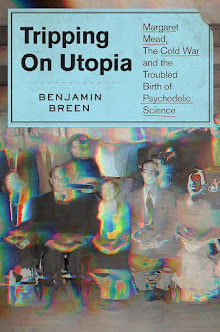 |
| Detail of a witch feeding her familiars. Woodcut, England, late sixteenth century. |
Some details:
Here's Hopkins' explanation from The Discovery of Witches itself, which is available online for free as a Guttenberg E-Book:
The Discoverer [Hopkins] never travelled far for it, but in March 1644 he had some seven or eight of that horrible sect of Witches living in the Towne where he lived... who every six weeks in the night (being alwayes on the Friday night) had their meeting close by his house and had their severall solemne sacrifices there offered to the Devill, one of which this discoverer heard speaking to her Imps one night, and bid them goe to another Witch, who was thereupon apprehended, and searched, by women who had for many yeares knowne the Devills marks, and found to have three teats about her, which honest women have not: so upon command from the Justice they were to keep her from sleep two or three nights, expecting in that time to see her familiars, which the fourth night she called in by their severall names, and told them what shapes, a quarter of an houre before they came in, there being ten of us in the roome, the first she called was
1. Holt, who came in like a white kitling.
2. Jarmara, who came in like a fat Spaniel without any legs at all, she said she kept him fat, for she clapt her hand on her belly and said he suckt good blood from her body.
3. Vinegar Tom, who was like a long-legg'd Greyhound, with an head like an Oxe, with a long taile and broad eyes, who when this discoverer spoke to, and bade him goe to the place provided for him and his Angels, immediately transformed himselfe into the shape of a child of foure yeeres old without a head, and gave halfe a dozen turnes about the house, and vanished at the doore.
4. Sack and Sugar, like a black Rabbet.
5. Newes, like a Polcat. All these vanished away in a little time. Immediately after this Witch confessed severall other Witches, from whom she had her Imps, and named to divers women where their marks were, the number of their Marks, and Imps, and Imps names, as Elemanzer, Pyewacket, Peckin the Crown, Grizzel, Greedigut, &c. which no mortall could invent; and upon their searches the same Markes were found, the same number, and in the same place, and the like confessions from them of the same Imps...
 |
| Detail of a witch riding a goat-familiar from Hans Baldung's 1510 woodcut "Witches' Sabbath." |
Observant readers will also note the final title line, in which it is revealed that Boy -- "the strange breed of this Shagg'd Cavalier" -- was in fact "whelp'd of a Malignant Water-Witch." It was said that Boy could catch bullets in his mouth, find hidden treasure and foretell the future, and his powers were so respected by his fellow Royalist soldiers that the dog was promoted to the rank of Sergeant-Major-General!
 |
| Another contemporary depiction of Prince Rupert and the witch-dog Boy, from the anti-Royalist pamphlet "The Cruel Practices of Prince Rupert" (London, 1643). For more see the Pepys Diary site's entry on Rupert. |











5 comments:
I would have no compassion on
the witches. I would burn them all.
Martin Luther from http://tinyurl.com/ykl36ow
It's terrible that "witch" has such a bad reputation associated with it. You've read "The Wise Child"? Juniper is such an endearing, beautiful, charming, sincere woman...who the townspeople want dead.
Thank you for this post, I have bookmarked The ebook you shared!
Cheers~
Don't you wonder what really happened and what these people acturally saw. Just because a woman was a little different she was branded as a witch. By their standards, today we would all be considered witches.
Donna
I've always loved that Woodcut of all the familiars ever since I first saw it in the partwork "The Unexplained". Newes is my favourite too - he looks incredibly cute.
Especially that magician who could turn wine into water. Freak.
Post a Comment